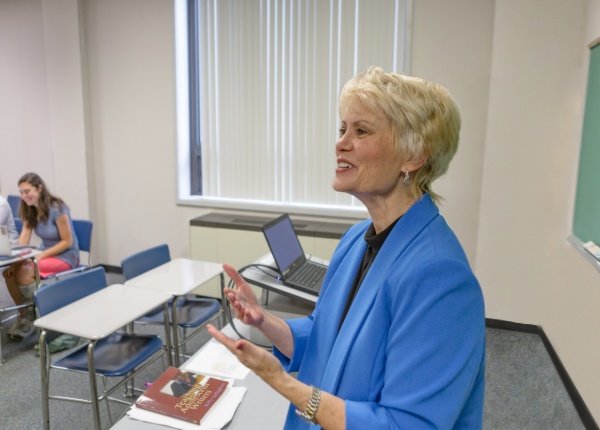Autistic Spectrum Disorder (ASD) is one of the most baffling and prevalent disabilities that families and schools are challenged by these days.
Characteristics
ASD is considered a spectrum disorder because of the diverse manifestation of characteristics. An individual with a diagnosis of autism is sometimes referred to as being “on the spectrum.” Regardless of where on the spectrum an individual is, the defining characteristics include struggles with communication, social difficulties, sensory issues and repetitive behavior.
Communication
Communication problems range from individuals who have no verbal language to those who just have difficulty interpreting figurative language and those who struggle to interpret nonverbal communications.
Sensory Stimulation
It is common knowledge that many individuals with autism struggle with sensory overstimulation because of hypersensitivity to sights, sounds, touch, tastes or smells. It is less well known that those with autism can also be hyposensitive to some sensory stimulation.
Repetitive Movements and Behaviors
One of the most obvious characteristics of ASD is repetitive movements or behaviors. These can include lining up or touching objects ritualistically, or movements such as hand flapping or spinning. Although we don’t always understand these seemingly compulsive behaviors, it seems that some of the behaviors are repeated for the sensory stimulation they provide. In fact, they are often described as “stimming.”
Social Struggles
Deficits in theory of mind are at the heart of social struggles for many with autism. Typically, theory of mind develops during the fourth year of life, but it may never fully develop for some with autism.
Theory of mind involves understanding that each of us has his own mind and thoughts. It allows us to take the perspective of others and predict how they will feel and act in social situations. Without a strong theory of mind, those with ASD often do not understand what others are thinking and how they will react. This hinders their social responsiveness.
Social difficulties are also linked to other characteristics such as difficulties with communication and odd behaviors. Less common symptoms of ASD include frequent stomach upset, seizures and sleep disturbances. Although these symptoms are not as common, they are no less impactful than the core characteristics of ASD.
Stats
Just this week, new prevalence numbers have been released indicating that 1 in every 40 children in the US is diagnosed with autistic spectrum disorders. Previous estimates placed prevalence at 1 in 59.
So, why the change? Are we experiencing an autism epidemic, as some have suggested?
Actually, this recent change in prevalence may stem from a change in research methodology. Previous numbers have come from the Centers for Disease Control and have been based on medical and educational records. The newer figures are based on surveying large numbers of parents about the health of their children.
Causes
There is no one definitive cause of ASD, nor one biological marker to aid in diagnoses. A combination of genetic and environmental factors is involved.
Genetic Mutations
The Human Genome Project did not find a single gene to be responsible for autism, but rather found evidence suggesting that small mutations on various genes contribute to the condition. These mutations likely occur due to errors during replication of genetic material when sperm and/or egg cells are created. Too much or too little genetic material may result from these tiny mutations.
As many as 65 genes have been found to contain de novo mutations that are believed to influence the development of autism. De novo mutations are spontaneous, non-inherited changes to genetic material.
Postzygotic mutations are also thought to contribute to ASD. These are genetic mutations that occur after fertilization in the earliest days of a child’s life.
Genetic mutations increase with parental age, thus explaining why older parents are more likely to have children who are autistic. However, this does not explain why teenage mothers are also more likely to have children with ASD. This is one of many unanswered questions that researchers are currently investigating.
Environmental Triggers
Many researchers believe that genetics alone do not cause autism, but that one or more environmental triggers are necessary. Illness and exposure to toxins are the most commonly proposed triggers.
The most popular and controversial trigger proposed is childhood vaccinations. There has been research both for and against this theory. Research has not conclusively proved or ruled out the influence of vaccinations, but it seems unlikely that vaccines can cause autism in a child without the susceptibility caused by genetic mutations.
Less popular theories suggest that exposure to large amounts of valproic acid, folic acid and other substances may serve as environmental triggers. Without conclusive research, these theories are just educated, reasoned guesses at what causes autism.
Treatment
Behavioral and drug therapy are often prescribed for those with ASD. In fact, almost 70% of those on the spectrum are treated with some type of behavioral therapy.
Applied Behavior Analysis (ABA) and Discrete Trial Training (DTT) are the most common behavior treatments for ASD. Although these two are related, there are differences. ABA focuses on using behaviorism (e.g., rewards and consequences) to change behaviors. DTT is also based on a system of rewards, but it focuses on shaping behavior in small, discrete increments. DTT breaks tasks or behaviors down into small, do-able steps that can be reinforced. Both have been shown to be highly effective, but progress is often slow and tedious.
The latest statistics show that less than 30% of those with ASD are treated with medication. Medications prescribed vary greatly but include drugs commonly prescribed for ADHD, OCD, anxiety and other psychiatric disorders. Drugs are seen as a complement to behavioral therapy and are prescribed to manage symptoms, not as a cure.
Christian Response
There are so many things that are unknown about ASD, but as Christians, we must learn what we can so that we can minister effectively to the individuals and families affected by it. Above all, we must minister Christ’s love and deal patiently with those who have autism.
We must remember that every person is a unique creation of the perfect Creator and that He has a purpose and plan for each. We are called to love and disciple those whom He places in our influence. And for many of us that will include some with autism. Throughout my teaching career, some of my best memories and most enriching experiences have come through work with those on the spectrum.








